From ancient coins and mosaics to precious sand, a growing number of tourists are returning artefacts stolen from Italy's cultural heritage sites.
By Andy Devane
Several years ago a bulky package arrived out of the blue at a wine bar near Piazza Navona in Rome's historic centre. When the owners of Il Piccolo opened the weighty parcel they were surprised to find a bubble-wrapped sampietrino – a Roman cobblestone – that had been sent all the way from the UK.
Accompanying the unusual contents was an anonymous letter from a British tourist overcome with remorse for the theft. The note stated that the visitor had taken the cobblestone "as a souvenir" while on holiday in Rome the year before, requesting the owners of Il Piccolo to return it to "the street between Piazza del Popolo and Pincio."
The prodigal return of the humble sampietrino was to precipitate a recent trend in restituting far more valuable artefacts, often years after the theft, usually compelled by a guilty conscience.
Ill-gotten souvenirs from Italy
The phenomenon of pilferred items winging their way back to Italy appears to have picked up over the last year, perhaps due to covid-19 lockdowns and people stuck at home facing their ill-gotten mementoes.
It is also a topical question given the current debate around cultural restitution and repatriation, spearheaded by Prof. Dan Hicks in his book The Brutish Museums.
A few weeks ago, an anonymous visitor sent a small piece of mosaic to the museum at Paestum, the archaeological park of ancient Greek ruins in Italy's southern Campania region. In the note, written in Italian, the sender apologised for their behaviour and said the tiny tessera had been taken “stupidly” in 2017.
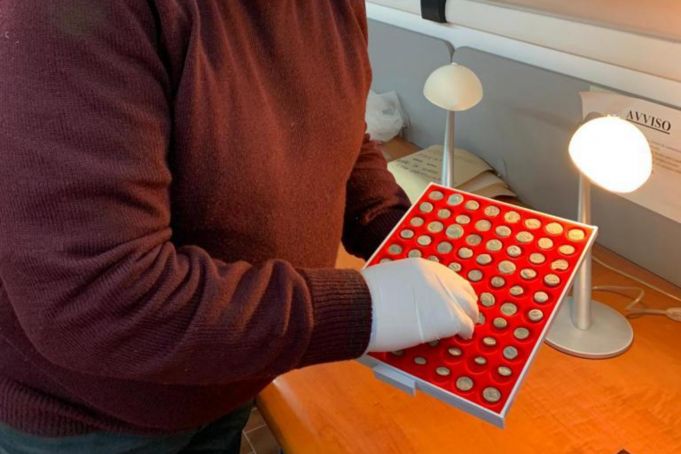
But that was nothing compared to what Paestum authorities would receive a few days later. A local priest was tasked with returning a collection of 208 ancient coins taken illicitly from the site, after the penitent admitted to the crime while in the confession box.
The thief – whose identity remains a secret under the confessional seal – begged the priest to hand over the looted coins directly to Paestum's director, Gabriel Zuchtriegel.
"It is the latest in a series of restitutions by people who, moved by the remorse of having committed an act harmful to Italy's heritage, have decided to return what was taken illegitimately," read a statement from the museum. Experts discovered that of the 208 coins, seven were fakes. The originals included five silver coins, one in aluminium and the rest in copper alloy, many of which dated to the third century BC.
60 years of guilt
Three years ago Paestum also received a stolen artefact directly from the man who took it as a child in 1958. While most tourists prefer to remain anonymous, not so for Bob Martin, an American who returned to Paestum 60 years after he stole a small figurine as an eight-year-old boy on a family vacation.
The young boy thought he had found the bone of a Roman legionary but it was only back home in the US, after washing it, that his horrified mother realised it was an ivory figurine. Martin kept the artefact for six decades before deciding to relieve himself of the "burden" and deliver it in person to a grateful Zuchtriegel.
Last week a parcel arrived at the Pompei archaeological park containing a terracotta fragment of antesissa, portraying the face of a woman, that was traditionally used as decorative element on the roof of an ancient domus. Inside the package was a short note, written in Italian, containing an apology and the words "50 years ago I removed this fragment from a building. I am ashamed and I return it to the owner. Sorry".
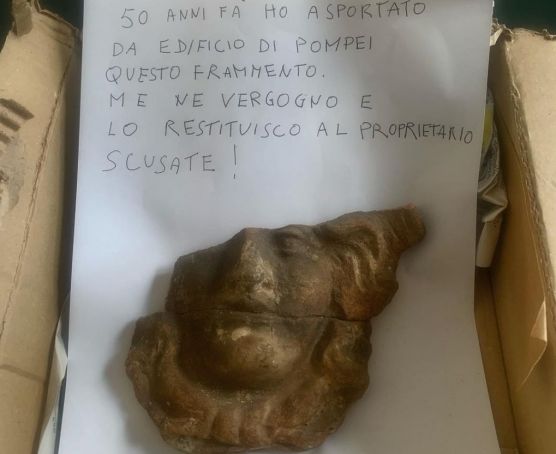
Although most tourists return stolen items out of guilt, others do so for superstitious reasons. Last October a Canadian tourist returned artefacts stolen from the ancient city of Pompeii 15 years earlier, to “shake off the curse that has fallen on me and my family."
The 36-year-old woman, identified only as Nicole, sent a package to a Pompeii travel agent containing two mosaic tiles, ceramic fragments and parts of an amphora which she stole during a visit to the archaeological park in 2005.
In addition to the looted artefacts, which the travel agent handed over to police, the package contained a letter of confession in which Nicole expressed regret for her actions. "I was young and stupid" – she wrote – "I wanted to have a piece of history that nobody could have." However she feared that the artefacts were possessed of "so much negative energy" linked to "that land of destruction."
Pompeii curse
Nicole blamed the relics looted from Pompeii – buried in volcanic ash after the eruption of Vesuvius in 79 AD – for years of serious health problems and financial woes. “I have had breast cancer twice, the last time ending in a double mastectomy" – she wrote – "My family and I also had financial problems. We’re good people and I don’t want to pass this curse on to my family or children.” She concluded by saying that she has learnt her lesson and is seeking "forgiveness from the gods."
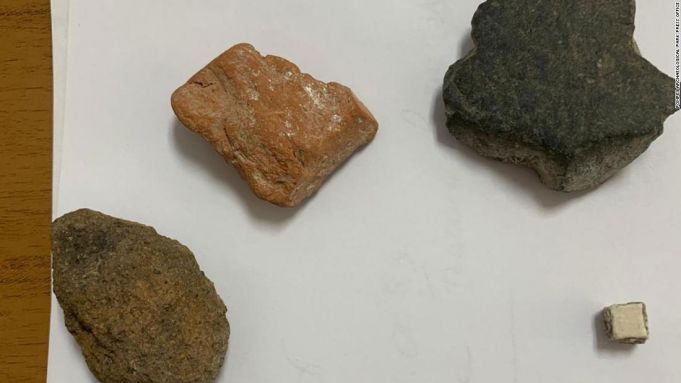
The unexpected package that landed on the Pompeii travel agent's desk contained another letter of apology from a couple, also from Canada, along with some stones stolen from the site in 2005. "We took them without thinking of the pain and suffering these poor souls experienced during the eruption of Vesuvius and the terrible death they had," said the letter. "We are sorry, please forgive us for making this terrible choice! May their souls rest in peace.”
However, in the case of Pompeii at least, there is nothing new in this phenomenon which occurs practically on a weekly basis. Tourists have been looting – and returning – items stolen from the 44-hectare site for decades, leading to the establishment of a special display area of returned artefacts.
The pieces are exhibited alongside remorse-laden letters, such as one from a Spanish tourist who had stolen a piece of decorated plaster which became "a harbinger of family misadventures and misfortunes."
Bad omen
The same goes for an English woman who in 2015 sent back a piece of mosaic stolen in the 1970s by her parents and which she believed was a bad omen.
One of the most dramatic letters came from a Canadian woman who stole a figurine from Pompeii during her honeymoon. As the newly-weds travelled home the husband died of a heart attack. The little figurine was in his suitcase.
However this opportunistic pilfering, much of it by foreigners, should not be confused with the illegal, highly lucrative activity of so-called tombaroli or tomb-robbers. These professional thieves, who often work under cover of darkness, are the focus of a specialised branch of the carabinieri responsible for combatting art and antiquities crimes.
Last November, a heavy package arrived at the capital's Baths of Diocletian, home to the Museo Nazionale Romano. Inside was a chunk of marble which had been taken from Rome, possibly from the Roman Forum, four years earlier by a tourist from Atlanta in the US.
The marble fragment was defaced with the inscription "To Sam, Love Jess, Rome” – written with a marker – and was accompanied by a letter.
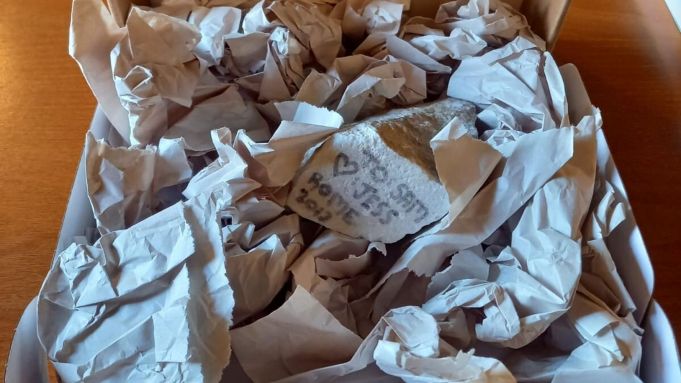
“Please forgive me for being such an American asshole and taking something that was not mine to take. I feel terribly for not only taking this item from its rightful place, but placing writing on it as well. That was extremely wrong of me and I now realize in my later adult life how inconsiderate and disrespectful that was. I have attempted many hours of scrubbing and cleaning to remove, but to no success.”
The museum's director Stéphane Verger surmised that the tourist's conscience might have been stirred after hearing about the Pompeii story and the Canadian woman a few weeks earlier. Verger said the marble fragment was of limited value but welcomed the “very important symbolic gesture.”
Gestures of repentance
The Colosseum tends to make the news when tourists are caught carving their names into the amphitheatre's walls. However it too is not immune to acts of theft and eventual return of illegal souvenirs.
Alfonsina Russo, director of the Parco archeologico del Colosseo, told Wanted in Rome that in the last few months some stolen archaeological pieces have been returned by post.
One package, from Orinda in California, contained a piece of brick. It was accompanied by a letter, signed by "a family," which stated that the parents had found the piece in their children's bedroom and wanted to return it to its place.
Russo said a that a second package, which arrived in recent weeks from Vancouver in Canada, contained a small piece of travertine marble but was not accompanied by a letter. Both cases “seem like gestures of repentance to me," she said.
Precious pink sands
In addition to the theft of man-made treasures there is also the looting – and eventual return – of Italy's environmental heritage. One of the prime examples relates to the so-called paradise island of Budelli, off Sardinia, famous for its unspoilt beaches whose precious pink sands have proved too tempting for some visitors in the past.
There are now increasing cases of travellers seeking to return sand and shells, often taken decades ago, however one of the most poignant stories belongs to an Italian woman called Eleonora, from the northern Liguria region of Italy.
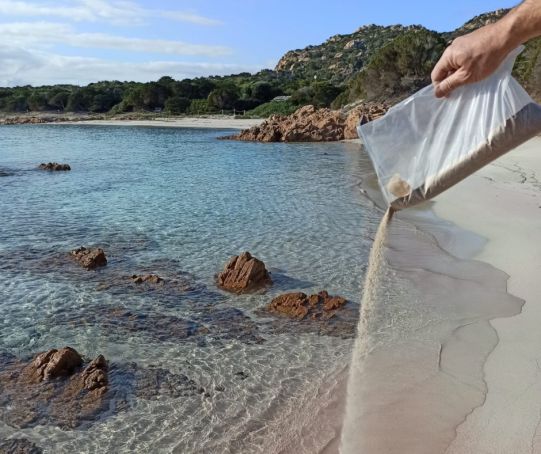
Last year she returned a little bottle of sand to Sardegna Rubata e Depredata, an association which deals with the theft of shells, sand and stones from the coasts of Sardinia and nearby islands. The sand had been a treasured possession of Eleonora's father, a keen sailor, who kept it as a “lucky charm” in his cabin since 1978.
In recent years her father had spoken of his “tremendous guilt” at having taken the sand from the beach whose beauty had reduced him to tears the first time he landed on its pink-sanded shores.
The old sailor asked his daughter to accompany him on a final voyage to the island, to return the sand to its rightful place, but sadly he died before they could make the journey together. And so, 42 years later, Eleonora's “family heirloom” finally returned home.
A shorter version of this article was originally published in the February 2021 edition of Wanted in Rome magazine. Cover photo credit: Viacheslav Lopatin / Shutterstock.com.

















